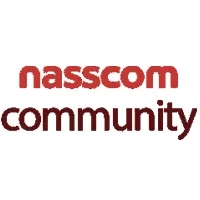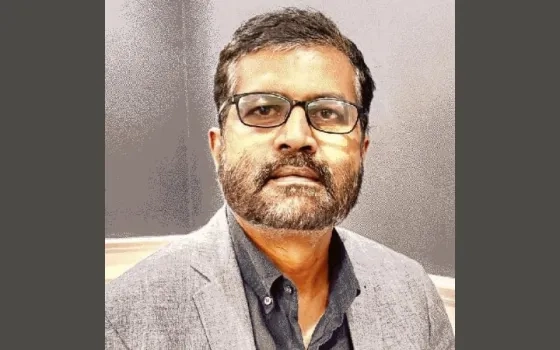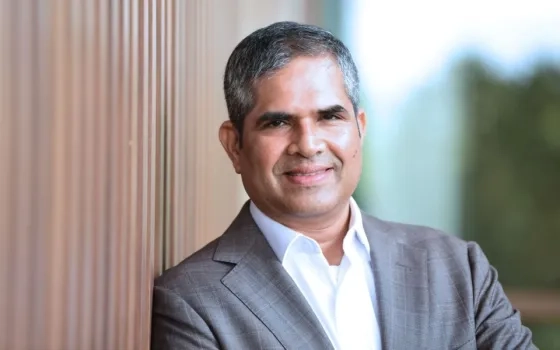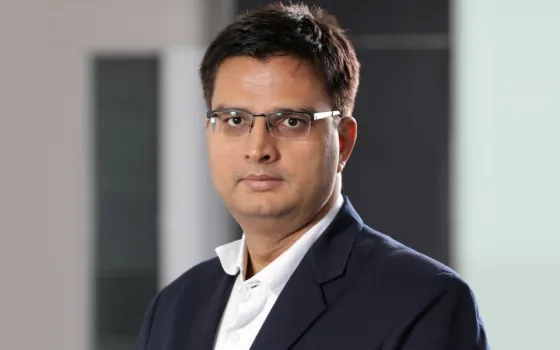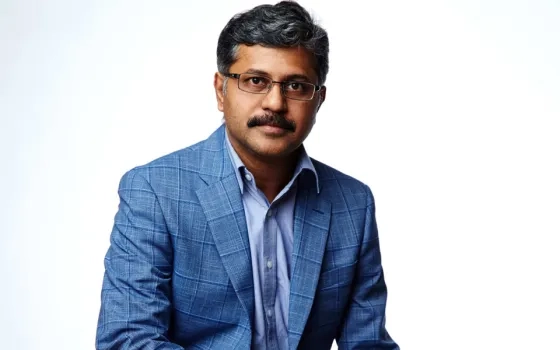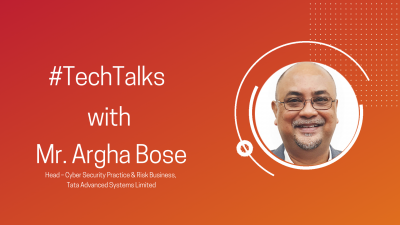
This is a very different angle to leadership and business as we see often. It is clear that with greatly enhanced connectivity and remote working requirements, the focus on cybersecurity will be at an altogether different level. We were fortunate to catch up with Mr. Argha Bose over a virtual luncheon session, and he was kind enough to share his insights.
Please read on, to find out how the future is going to look like:
- Please share your thoughts on how you are managing productivity and employee morale during this crisis.
As you know, we are into cybersecurity and at this point, it is one of the most critical areas in which companies always need to remain vigilant . Ours is primarily a people-driven business that requires a very high level of skills and capacity to deliver.
At TASL Cyber Security Practice, we were able to transition quickly to work from remote locations and safeguard our deliverables from getting impacted. We knew that a lockdown was imminent but not to the extent and with the speed we’ve seen it to date. We had conducted dry runs for our core services accordingly and addressed roadblocks including the connectivity issues to enable our resources to work from home and continue to serve our customers. For people who are on the consulting side of the business, we confirmed that they have information access to enable business continuity. While moving to this new model at scale, we had to also be mindful that we did not end up with any new loopholes.
From an external interfacing standpoint, we continued to work closely with our customers while adhering to their security guidelines. Towards this, we also engaged with multiple functions including HR to maintain employees’ safety and frictionless delivery. Staying close through regular follow-ups is the key. Whilst the lockdown was declared with immediate effect, we remained focussed on employees’ well-being and productivity as our topmost priorities.
It is my observation that WFH as a practice hasn’t been as prevalent in India as compared to other geographies, although it had been gaining acceptance. We aren’t there yet but if this is going to be the new normal then there’s a greater need for coordination and collaboration. I am saying this from a long-term standpoint. As of now, the approach has worked well.
We are primarily a horizontal organization without too many hierarchies. With the changed scenario, it wasn’t going to be easy for the management to be in touch with people cutting across the levels, and it was evident that we needed an out-of-the-box kind of thinking. So, we ventured out to dismantle layers (informally) to the maximum possible extent and created smaller groups (people with similar skills/project delivery) to optimize the frequency and quality of interactions. This structure enabled people to take ownership and reach out more effectively to their team managers. It facilitated smooth communication across levels and patterns started to emerge. With a constant stream of ideas and feedback, it helped us to plug the gaps based on the feedback that we received from the ground. We had plans to do this anyway, and now we have a deeper understanding of how to cross-leverage our potential across the organization. It is very important to communicate effectively and remain close to the last-mile resource as well. This ensured that our delivery remained unaffected and the messaging percolated downstream at regular intervals. It was rather effective in earmarking responsibilities as well. I’d like to add here, yet another powerful channel of communication i.e. Town Hall – albeit virtual. It has indeed been great learning on team dynamics all along.
We are also focusing on the skilling (and cross-skilling) aspect to ensure that talent stays relevant to our customers. We have kept our ears to the ground and continue to observe the major shifts in the landscape to decide in which direction we need to focus on. Our HR has been very busy conducting events such as virtual Fun Fridays that help in maintaining strong employee connect. It started as an experimental approach and has paid rich dividends.
- In a Post-COVID world, do you see any disruptions in your business line? And, how will you turn them into opportunities?
We are in the business of cybersecurity and as I mentioned earlier, for us, the expanse of the landscape is massive. All of this happened so abruptly that businesses were caught off guard. Typically, this is a fertile ground for cyberattacks and I can only see our workload going up exponentially. And as I said, India was never prepared to adopt WFH at this much scale. So, there are some additional challenges as well.
I believe that organizations will now look at cybersecurity from a completely different standpoint. It was already a major topic for boardroom discussion and now with all of this, it will be even more so. In the drive towards modernization of IT, cybersecurity is now an integral part. We can expect that this model of WFH will be around for some time and the significance of cybersecurity cannot be over-emphasized. Organizations must compulsorily ensure that continued remote access, protection of data, and authentic user access are provided. Moreover, there are third-party users as well (vendors, partners, etc.) and data travels out of the companies’ network. Therefore, providing secure access is a pan-industry phenomenon. For us, it is an opportunity to keep the WFH environment safe.
- How do you see this new model of WFH shaping up? Is it here to stay? Please can you do a deep dive for us, a SWOT of sorts?
As COVID-19 started to impact our lives and changed the way we operated, WFH became the new normal and most of us had to hit the ground running to accommodate our attitude and habits. When a crisis like this happens, the pace of business is different. We have started to see work with a completely different lens. We are suddenly having to accept the fact that telecalls will have children popping in or one needs to align the office schedules to address the pressing needs at home. There is a lot of human element that people have started to accept and work around that, which has led to a lot of patience been built in either while working on something important or attending meetings over video conferencing. So is it here to stay, I presume so. This has given every organization to have a plan B and be prepared with it to be able to transition better in similar kind of situations. Moreover, even traditional organizations have faith now that WFH can work and people can be productive. End of the day in my personal view, if an employee is delivering on time should I bother whether they are in office, home, or even the cafeteria? Frankly, no. Certainly, WFH provides greater flexibility and our time can be better utilized and specifically where people have a longer time to commute or need to be at home for any pressing needs. On the other hand, does this model hamper my ability to connect with my teams and maybe have a corridor chat or quick coffee break and would it matter? The answer is yes. So effectively, I feel that it has got to do with the role one has in the organization and there is no single right or wrong answer.
This model is ideal for those who have elderly parents and very young children at home. They can optimize their time and efforts. Moreover, we have access to a greater talent pool as the physical location does not matter any longer. We can hire from anywhere in the country. It also allows us to stay close to the customer at all times.
There’s a strong element of human connect that I personally miss today – the non-verbal aspect of communication, observing behavioural traits, etc. Technology is so powerful today that it almost provides an experience that is as good as face-to-face interactions.
Not everyone has the same level of self-motivation. Some need more handholding and arguably, remote working may not necessarily suit them. We can’t ignore the fact that we are creatures of habit and some people can only function effectively when there’s a definitive framework in place, such as an office environment. Also, some managers value face-time a lot and would prefer the traditional approach over remote working. The more granular your engagements are, the number of touchpoints also increases proportionately. In some cases, a hands-off approach works, and in others, it doesn’t. In certain instances, the element of de-motivation cannot be ruled out entirely. The WFH model is entirely dependent on TRUST and, a very high degree of self-discipline is required to make it sustainable in the long run. So, a SWOT might not exactly fit in here as the demarcations have very thin lines and roles, job profiles and the organizational culture drives a lot of the decision-making process.
With respect to your question of the hiring process and the interviewing challenges, remote interviews are probably as good as 95% of the real thing – technology is powerful today. Even a few years back, it wasn’t the case but now things have improved and there’s a very little difference today. An interview gives us an opportunity to study the behavioural aspect of candidates under stress. Particularly, the non-verbal aspect of communication. Technology on this front is improving continuously and giving us all the necessary cues. Today, there are so many virtual meetings that it has almost become a regular feature. With time, we’d have perfected the mechanism and there’d be very little to separate from face-to-face meetings.
- How can India optimize from this crisis – manufacturing and services angle? Things that will work and those which won’t?
As I am not an expert in the manufacturing industry, I can only speak from the cybersecurity perspective and provide my thoughts. It is often said that India had missed the manufacturing bus. But, COVID-19 has brought back the focus on manufacturing, and now a great opportunity in this sector awaits the nation.
In the manufacturing sector, there’ll be a stronger focus on automation to bring down cost and increase productivity – a great opportunity to wean away businesses from countries. Already, many companies are pulling out and the contenders in other regions are bidding hard. If India plays its cards well, we will have a great chance ahead. Obviously, the more you automate, the more you need to augment the cybersecurity posture. And, it’s not just software but hardware devices too.
- Specific leadership traits during disaster recovery.
- First, we need to accept that there’s great uncertainty.
- We need to set a common direction for the team with a neutral view. Only then, diverse teams can be aligned.
- Planning is a major component, but it needs to have a high degree of flexibility.
- During a crisis, we need a greater emotional connection with the team and should always be open to helping others at any time of the day. Anxieties in humans often come without notice and they don’t follow a 9 – 6 cycle.
Interviewed by Soumitra Dasgupta, NASSCOM. You can write to him at soumitra@nasscom.in




